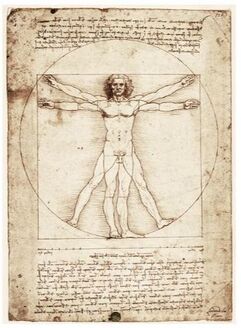 I generally try not to write about a topic that’s already been exhausted by countless other blogs, videos, talks, etc. but sometimes I get bold enough to think that I might add just one more re-frame that might, just maybe, help to simplify a topic that has been over-wrought, over-written, and most importantly over-thought. What I’ve found with product design - as with most things - is that it doesn’t matter how many tools you have at your disposal, how many blogs you’ve read, frameworks you follow, or videos you’ve watched. If you don’t have the foundational mindsets to apply them well, then what you build will check all the boxes and deliver little of the value. So, I’d like to strip the topic of human-centered design down to three basic mindsets - and then Google can tell you everything else you need to know about how to actually do it. Mindset #1: Be Human. You are a human being designing products for other human beings. (I warned you I would make it basic.) While this is a painfully obvious statement, it’s also often ignored in product design and is a chronic reason for product failure resulting from lack of adoption. I spent many years in education and in healthcare - both in technology and not. The number of products and services in those two industries that are designed to facilitate those two industries - not the people working in them or the outcomes they are supposed to achieve - is one great driver of their continuing bureaucracy and inefficiency. In education, we build tools and strategies for tracking student risk indicators but do little to design tools and processes to increase student engagement, mental health, or otherwise. In healthcare, we spent countless billions of dollars to manage and make sense of patient healthcare data but invest relatively little in helping people access healthy choices and manage their own health and wellness. So, what are we trying to accomplish and for whom? To remain human in our product design, we must:
Mindset #2: Be Humble. You don’t know everything and, if you work hard enough, you will probably find out that you don’t know very much at all. This is a good thing, not a weakness. In fact, after a dozen years in education and youth work and having co-founded a company building a software product based on that experience, I became a much better product designer when we pivoted the company to healthcare and I actually didn’t know anything at all. All of my experience and previous knowledge in education wrongly gave me the impression I had all the answers and made me less curious about what people thought their problems were - and less honest about what they would actually be willing to do to solve them. In healthcare, I knew it was learn-or-die for our product and our company, so I approached product design with more humility. To remain humble in our product design, we must:
Mindset #3: Be Hungry. If you aren’t deeply, personally motivated by the creative, iterative process of product design, you will not be able to sustain human-centered design over time. Getting feedback from our users is difficult, often humbling, and at times humiliating. It’s a learning process and learning requires a deep desire to face and learn from mistakes - and not cover them up. Getting feedback on an early product is particularly challenging as we often try to explain away its known deficiencies more than listen to the feedback on what’s there. Our insecurity takes over. As I mentioned above, humans (meaning us) are emotional, but we have to be bigger than our own egos if we are actually going to solve real problems for our customers. In other words, our hunger must be stronger than our ego. To remain hungry in our product design, we must:
0 Comments
Leave a Reply. |
Categories
All
Archives
April 2024
|
 RSS Feed
RSS Feed